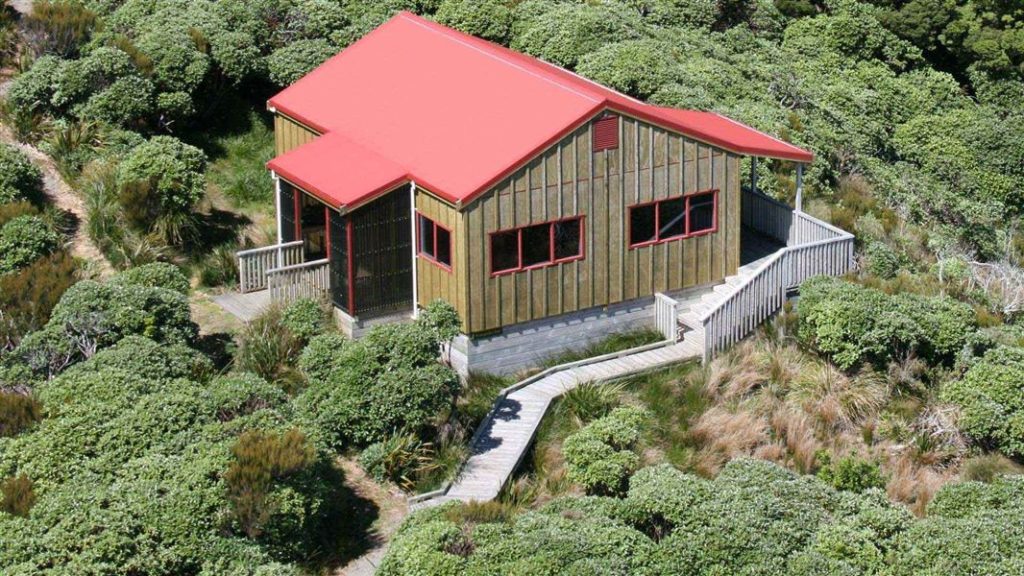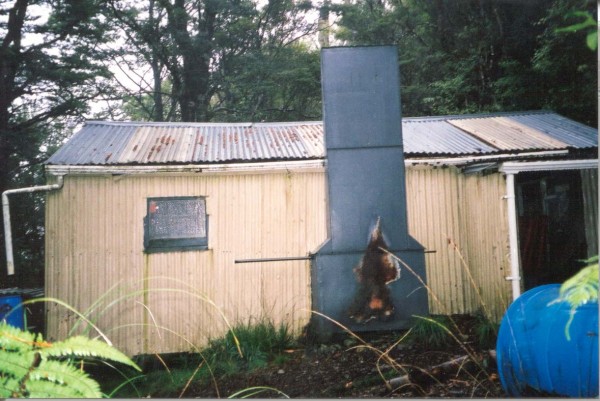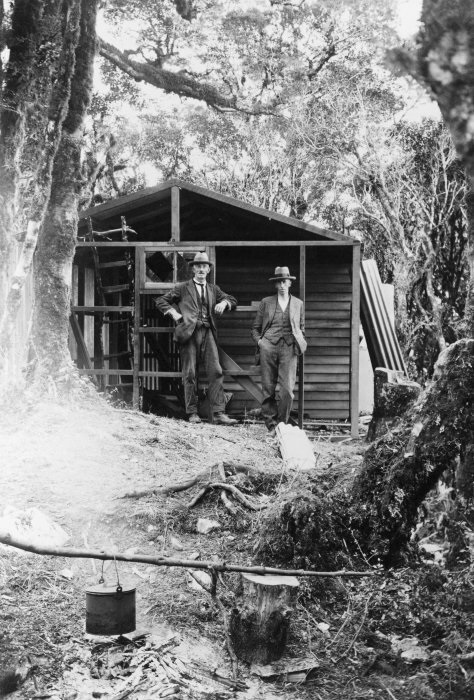Waiopehu hut is managed by the Levin Waiopehu tramping Club. (LWTC) The hut is a Standard hut and huts fees are required to stay overnight. The first Waiopehu Hut was built by the LWTC in 1928. In 1936, a severe storm destroyed the hut so a second hut was built and officially opened on 17 May 1947. In March 2002, DOC acquired 100 ha of private land along Waiopehu Ridge, including much of the track and hut site. On 11 May 2002, a third hut was opened at a new site a little further up the ridge.

Waiopehu No3

The second Waiopehu Hut opened on 18 May, 1947, in the company of 100 trampers. It was removed in April 2002 & replaced with a newer hut 1 km up the ridge

Waiopehu Hut under construction, with E S Lancaster (left), and another (unidentified). Photograph taken by George L Adkin, between 6-7 February, 1928.
THE BIG STORM – The Evening Post of 4 February 1936 reported:
The storm which raged on Sunday was responsible for the death of a young man and five others had a narrow escape. They were members of a tramping party who were out on the Tararuas behind Levin. The victim was Ralph Wood, married, aged 29, an optician, of Manapouri Crescent, Palmerston North, and the son of well-known Palmerston North residents. Mr. Wood succumbed to exposure and exhaustion on the top of Twin Peak, where the full force of the hurricane was felt.
The other members of the party were Andrew Fuller, who acted as leader, Tom Arlidge, Ralph Dawick, Harold Ramsay, and Albert Waters, all of Palmerston North. The party set out shortly after midday on Saturday on an excursion to Te Matawai hut, which was reached at 6 p.m. During the night the storm broke with such force that they decided to return by the same way as they had gone into the hills, but the flooded state of the Ohau River prevented this. They then took the route over to Waiopehu.
While going over Butcher’s Saddle they had a terrifying experience. Trees, uprooted by the hurricane, were falling all around them, and none of the party expected to get out alive. The track was completely obliterated at times. They felt that all hope of getting out had vanished, and were soon feeling the strain of the heavy going. Progress was lamentably slow. Coming on to Twin Peak, however, the absence of large trees removed a great deal of the danger, but Wood was seen to be failing and died soon afterwards from exposure and exhaustion. Waters and Fuller, though both exhausted, tried to drag Wood with them over the peak to the other side, but they had insufficient strength. They lay down in the shelter of some scrub about 50ft from the top, unable to get over.
The other three men succeeded in crossing to where the Waiopehu hut should have been, but it had disappeared. They camped the night. Arlidge set out in darkness, and after an allday battle came out of the bush and reached Levin. Meanwhile Fuller and Waters in the morning crossed Twin Peak and rejoined Ramsay and Dawick at Waiopehu. The quartet could not get back down the Waiopehu track, but eventually they waded down the flooded Akaretu Stream, following the same route as Arlidge, and got out safely.





